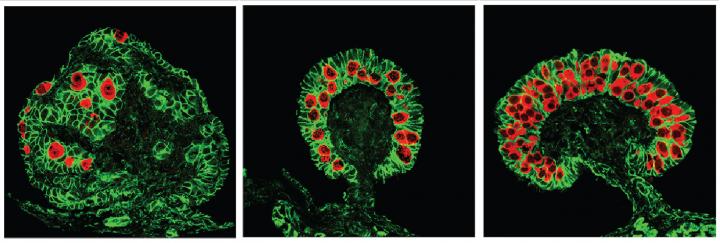Boy or girl? For those who want to influence their baby’s sex, superstition and folk wisdom offer no shortage of advice whose effectiveness is questionable at best — from what to eat to when to make love. But some animals have a technique backed by scientific proof: In turtles and other reptiles, whether an egg hatches male or female depends on the temperature of its nest.
The phenomenon was first discovered in reptiles more than 50 years ago, but until now the molecular details were a mystery.
In a study published May 11 in the journal Science, researchers say they have finally identified a critical part of the biological “thermometer” that turns a developing turtle male or female.
According to a team at Duke University and Zhejiang Wanli University in China, the explanation lies not in the DNA sequence itself — the A’s, T’s, C’s and G’s — but in a molecule that affects how genes are expressed without altering the underlying genetic code.
“Temperature-dependent sex determination has been a puzzle for a really long time,” said Blanche Capel, a cell biology professor at Duke who led the research. “This is the first functional evidence of a molecular link that connects temperature with sexual development.”
Unlike humans and most other mammals, the sex of many turtles, lizards and alligators isn’t determined by the chromosomes they inherit, but by ambient temperatures during a sensitive stage of development.
For a common pond and pet turtle called the red-eared slider, for example, eggs incubated at 32 degrees Celsius (nearly 88 Fahrenheit) produce all female hatchlings, while those kept at 26 degrees Celsius (79 Fahrenheit) hatch as males.
In the study, the researchers show that cooler egg incubation temperatures turn up a key gene called Kdm6b in the turtle’s immature sex organs, or gonads. This in turn acts as a biological “on” switch, activating other genes that allow testes to develop.
To home in on the critical Kdm6b gene, the researchers took a group of freshly laid turtle eggs, incubated them at either 26 or 32 degrees Celsius, and looked for differences in the way genes were turned on in the turtles’ gonads early in development — before their fate as ovaries or testes has been decided.
In a previous study, researchers examined all the gene readouts, or transcripts, produced in the turtles’ gonads over this critical time window.
They found several genes that were turned up or down at one temperature but not the other. But one of the first genes to shift was one called Kdm6b, which became much more active at the cooler incubation temperatures that produce males, and was almost silent at warmer, female-producing temperatures.
In the new study, the team used a technique developed by collaborators at Zhejiang Wanli University to suppress the Kdm6b gene in turtle gonads and see how it affects their sexual development.
Silencing the Kdm6b gene, they found, transforms a growing turtle embryo kept at temperatures that would otherwise produce a male with testes into a baby female with ovaries instead.
Further experiments showed that the protein encoded by the Kdm6b gene in turn interacts with a region of the genome called Dmrt1, which acts as a master switch to turn on testis development.
They found that Kdm6b activates the Dmrt1 master switch by modifying histones, the ball-like proteins that DNA is wrapped around inside the cell nucleus, like thread wound around a spool.
In many species, the tail of histone proteins is decorated with special chemical markers, or methyl tags, that keep genes along the DNA molecule inactive.
Kdm6b gene activity turns on the Dmrt1 master switch by removing these repressive tags and “loosening” the histone tails, which makes the DNA wound around the histones easier to access and read.
“It’s like removing the brakes off the male pathway,” said co-author Ceri Weber, a PhD candidate in the Capel lab at Duke.
Researchers have found temperature-related shifts in Kdm6b gene activity in other species whose sex depends on incubation temperature, such as alligators and bearded dragons. “This suggests that similar molecular mechanisms may be at work in other reptiles too,” Capel said.
The researchers think that Kdm6b and the protein it encodes don’t sense heat or changes in temperature inherently, since cooler incubation temperatures increased gene activity in the turtle’s future testes but not in other developing organs such as the heart or the liver.
“The next step is to find the temperature-sensing trigger,” Weber said. “We’re trying to narrow down the possibilities.”


